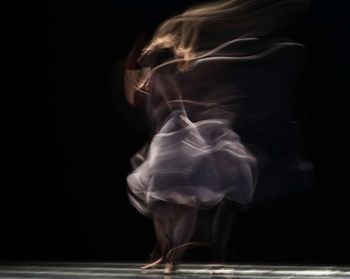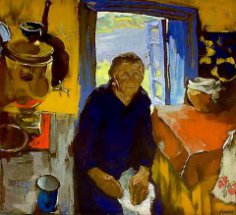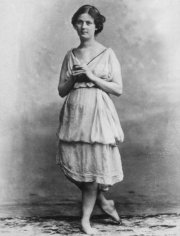
We're no longer pagans, but Christian and pagan traditions coexist in our minds in a strange way. We dye eggs for Easter and don't take out the trash after sunset, keep holy water at home, and take an old broom with us when we move. And on October 26th, some of us celebrate the Day of the Goddess Makosh .
Makosh is the goddess of the Eastern Slavs, the only female deity to stand alongside male deities on the Kyivan temple erected by Prince Vladimir. She was considered almost on par with Perun. Makosh was depicted using “feminine” woods, primarily aspen, but also willow, spruce, and pine. She was depicted as a long-armed woman holding a spindle or a cornucopia. With the spindle, she wove the Thread of Fate.
She spins threads,
winds into a ball,
not simple threads – magical ones.
From those threads is woven
our life –
from the beginning to the birth
and until the end,
until the final denouement – death
(“The Book of Kolyada”, 1st century).
Makosh is the goddess of marriage and childbirth, the patroness of girls and women. She was asked to provide a husband, protect a husband, or grant an easy birth and healthy children. Makosh's craft was spinning. If a woman spins at the wrong time, the goddess will become angry and tangle the threads, tearing the fabric. However, if the tow is left untended, Makosh will “spin” it.
According to Slavic belief, only “wicked” women were allowed to weave and spin on Makosh's Day. However, Makosh was considered the patron of trade on her day.
The name Makoshi has two roots: “ma” meaning “mother” and “kosh” meaning “basket of grain.” People also prayed to her for blessings over crops and asked for a bountiful harvest.
Historians debate which of the following versions of the goddess's name is correct: Mokosh, Mokush, Mokusha, Mokushka, Makosh, Makesh. The one with the root “a” is considered the most ancient. “Okanye” emerged in Slavic speech later.
Makosh's Day is Friday. Incidentally, after the adoption of Christianity, Orthodox Slavs began to associate Friday with female saints and canonized figures. According to popular belief, spinning, washing, and bathing children were forbidden on Friday. Such disrespect for the goddess could bring troubles to the homemaker and illness to the children.
When angry, Makosh could bring eye diseases and headaches to an undesirable mistress, and she would also tickle her children, frighten chickens and other birds, and prevent the dough from rising in the dough maker.
If the goddess liked the housewife, she would cure her of illness, lull her children to sleep, assist her in cooking, and protect poultry and small animals from death. In some areas of Russia, Ukraine, and Belarus, the image of Makosh was transformed into that of the domikha, the wife of the domovoi. The domovoi would help or harm the housewife, while the domikha would help or harm the housewife.
On Makosh's day, the housewife had to sacrifice the best cloth or yarn to her patroness, throwing the offering into a well.
Makoshin's metal is silver, the stone is rock crystal and the so-called “moonstone”; the animal is a cat; the symbol is yarn, a ball of wool, a spindle, and they were brought to the temples.
Apparently, this is where the belief originated: that a cat should be allowed into a house first, ensuring prosperity, while breaking a spindle was considered a bad omen. It's likely that many of the sacred traits attributed to cats also stem from the fact that this animal was chosen by Makosh herself.
In Slavic mythology, Makosh was associated with all small creatures living in the home: goats, chickens, cats, mice, cockroaches, crickets, bats, frogs, ants, and so on. Spiders are Makosh's servants. Therefore, if a spider web got into your face, it was considered a good omen, but if it was torn off, the goddess could become angry.
Makosh's amulet was a specially twisted rope worn on the wrist. It is believed that the ancient name of the Slavic community—verv (rope, bundle)—was not a coincidence: by naming their settlement this way, the Slavs hoped for the protection of the powerful goddess.
On Makosh's Day, it was customary to dance in a circle. But not a regular circle, but a two-ringed one. The first ring—the outer one—went clockwise (with the sun)—for life, and the second—the inner one—went counterclockwise, for death. From that day on, preparations for winter began. Women put their households in order, began spinning, weaving, sewing, and preparing for the cold.
Her day falls precisely at that time of year when the feminine essence of the goddess is fully revealed: in the fall, weddings are held, linens and materials for clothing are prepared, gatherings with songs at the spinning wheel are held, stoves are fired in the house – they do “women's work.”





